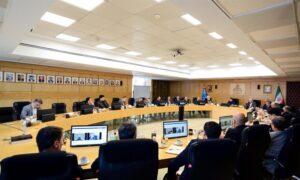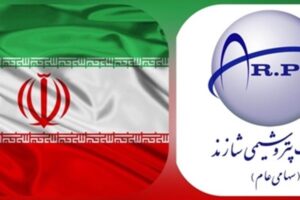“Rahbord Energy”: Today, using UAV will going to change the future of logistics especially in oil and gas sectors. The UAV is an acronym for Unmanned Aerial Vehicle, which is an aircraft with no pilot on board. UAVs can be remote controlled aircraft (e.g. flown by a pilot at a ground control station) or can fly autonomously based on pre-programmed flight plans or more complex dynamic automation systems. The acronym UAV has been expanded in some cases to UAVS (Unmanned Aircraft Vehicle System). It is important to distinguish between military and non-military (civil) use of UAVs. UAVs specifically designed for civil and commercial applications. They originated mostly in military applications, although their use is expanding in commercial, scientific, recreational and other applications, such as oil, gas, petrochemicals, power, communications, environment, Meteorology, agriculture, urbanization, emergency & rescue, crisis management, cinema, Journalism and etc.
Remotely operated vehicles (ROVs) are a safe and widely used type of underwater vehicle serving a range of military, commercial, and scientific needs. ROVs are also used extensively in oil, gas, petrochemicals, shipping and ports, fisheries, dams, underwater environment, sea rescue and etc. By the 1980s, ROVs were becoming widely used by the offshore oil and gas industry.
UAVs applications in oil and gas are: 1-Flare stack inspections, 2-Oil pipeline inspections, 3-Offshore Oil platform inspections, 4-Talilings pond inspections, 5-Oil spill and damage detection, 6-Gas emissions monitoring.
Iran has 14,000 km of oil pipeline and About 40000 km gas pipeline network. Iran has some development program of oil and gas fields. These programs will increase pipeline length rapidly within next years.
For onshore fields, security needs and leak detection operations are two main needs for gas and oil pipelines. Existence of antiquated old pipeline network in Iran results in occurrence of leakage in some cases. On the other hand third party damages cause growing leakage in pipeline network in Iran. In some cases leakages cause to big environmental damages like pollution of one of the main river of Iran.
To compare different method, first definition 3 parameters: precious, cost and time needed for inspection. Maintenance programs for pipelines with regard to the determination of the priorities can be planned and reserved the flow of energy. By planting this network safety in the network up and this led to reduce the occurrence of accidents environmental pollution and damage the environment.
ROVs applications in Oil & gas industry can be namely; 1-Diver Observation , 2-Platform Inspection, 3-Pipeline Inspection,4-Drilling project Support, 5-Construction Support, 6-Debris Removal, 7-Call Out Work, 8-Platform Cleaning, 9-Subsea Installations such as plug a leaking oil well, 10-Telecommunications Support, 11-Object Location and Recovery, 12-Surveys: both visual and acoustic surveys are necessary prior to installing pipelines, cables and most offshore installations.
Totally, (ROVs) have facilitated the development of oil and gas resources in deeper water and have a number of benefits for oil companies.
Iran is one of the biggest countries in UAVs manufacturing in the world and this opportunity can be realized in ROVs field. I hope authorities and officials be serious about the necessity of UAVs and ROVs application in logistics especially in energy sector (oil, gas, and power), and support civil capability and its exports by effective policy making.





















